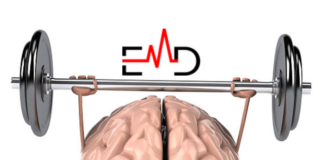Exercise Daily – Are you ready to embark on an exciting journey towards achieving your cycling goals? Whether you’re a novice cyclist aiming to complete your first-century ride or an experienced racer targeting a podium finish, having a well-structured training plan is essential. In this guide, we’ll dive into cycling training plans and how to tailor one to your specific goals. Let’s get started!
Setting Your Cycling Goals
Defining your cycling goals is crucial before you unveil the perfect training plan. What are you looking to achieve on your bike? Here, we’ll uncover the types of cycling goals you can pursue and why setting clear objectives is essential.
1. Types of Cycling Goals
Cycling goals vary widely, from improving your endurance to competing in races. Explore the diverse range of goals you can set for yourself.
2. Importance of Setting Specific Goals
Discover why specificity is the key to success when setting your cycling goals. We’ll delve into how specific goals can drive your training plan.
Assessing Your Current Fitness Level
To tailor an effective training plan, you must accurately gauge your current fitness level.
1. Methods to Evaluate Your Fitness
From FTP tests to heart rate monitoring, learn about the tools and techniques you can use to assess your fitness level.
2. Understanding Your Strengths and Weaknesses
Every cyclist has unique strengths and weaknesses. We’ll help you identify yours so that you can focus your training efforts where they matter most.

Choosing the Right Training Methods
When creating a cycling training plan, one of the critical decisions you’ll make is choosing the right training methods. The methods you select will directly impact your progress and ultimately determine how well you perform on your bike.
1. Endurance Training
Endurance training forms the foundation of most cycling training plans. Whether you’re preparing for a long-distance ride or aiming to improve your overall stamina, this method is indispensable.
I. Unveiling the Benefits of Endurance Training
Endurance training involves riding at a moderate pace for extended periods. Here are some compelling benefits:
- Enhanced Aerobic Capacity: Endurance training significantly boosts your cardiovascular fitness, allowing your body to use oxygen during rides efficiently.
- Increased Fat Burning: Long, steady rides promote fat burning, making it an excellent choice for those looking to shed excess weight.
- Improved Mental Toughness: Riding for extended periods builds mental resilience, preparing you for challenging rides and races.
II. How to Incorporate Endurance Training
To embark on endurance training, consider the following:
- Long Rides: Allocate a day in your weekly schedule for a long ride, gradually increasing the distance.
- Maintain a Steady Pace: During these rides, maintain a pace where you can converse but still feel challenged.
- Progressive Overload: Gradually increase the duration of your long rides as your fitness improves.
2. Strength Training
Strength training isn’t just for bodybuilders; it’s a valuable addition to a cyclist’s training routine. Building strength can improve your power on the bike and reduce the risk of injuries.
I. Discover Why Strength Training Is Essential
Here are some reasons why incorporating strength training into your cycling plan is essential:
- Increased Power: Stronger muscles allow you to generate more power, helping you easily tackle hills and sprints.
- Injury Prevention: Strengthening your muscles can reduce the risk of common cycling injuries, such as knee pain.
- Better Posture and Stability: A strong core and upper body contribute to better posture and stability on the bike.
II. Incorporating Strength Training
To embrace strength training effectively, consider these tips:
- Focus on Core Muscles: Core exercises like planks and Russian twists are excellent for stability.
- Leg Strength: Include exercises like squats and lunges to strengthen your leg muscles.
- Balanced Routine: Create a well-rounded strength routine that targets various muscle groups.
Interval Training
Interval training is a high-intensity approach involving alternating between intense effort and recovery periods. This method is excellent for cyclists, boosting their speed and anaerobic capacity.
1. Dive into the World of Interval Training
Here’s why interval training is captivating for cyclists:
- Increased Speed: Interval training pushes your limits and helps you become a faster cyclist.
- Time Efficiency: Short, intense workouts can deliver significant results in less time.
- Boosted Anaerobic Threshold: Your ability to sustain high-intensity efforts improves.
2. Implementing Interval Training
To get started with interval training:
- Select Your Work and Rest Intervals: Choose work intervals (high intensity) and rest intervals (low intensity) depending on your fitness level.
- Warm-Up: Always begin with a thorough warm-up to prevent injury.
- Gradual Progression: Start with shorter intervals and gradually increase the intensity and duration as you become more comfortable with this method.

Creating a Weekly Training Schedule
Now that you’ve unveiled the importance of setting clear cycling goals and choosing the right training methods, it’s time to dive into the next crucial step in crafting your cycling training plan: creating a weekly training schedule. This schedule will be the backbone of your training journey, helping you balance progress and recovery effectively.
I. Balancing Rest and Training Days
Creating a weekly training schedule begins with balancing training and rest days. Rest is as important as training; during these periods, your body repairs and strengthens itself. Here’s how to achieve this balance:
1. Define Training Days
Start by determining the number of days per week you can commit to training. Depending on your schedule and fitness level, this could be three to six days.
2. Incorporate Rest Days
Allocate at least one or two rest days within your weekly schedule. These days are crucial for recovery and injury prevention.
3. Vary Intensity
Balance high-intensity training days with low-intensity days. For example, you might have challenging interval sessions on some days and recovery rides on others.
4. Listen to Your Body
Pay close attention to how your body responds to training. If you’re feeling excessively tired or notice any signs of overtraining, don’t hesitate to adjust your schedule to include more rest.
II. Incorporating Cross-Training
While cycling should be your primary focus, cross-training can be valuable to your weekly schedule. Cross-training involves participating in different physical activities that complement your cycling workouts. Here’s why it’s essential:
- Reduced Risk of Overuse Injuries: Cross-training allows you to work different muscle groups, reducing the risk of overuse injuries common in cycling.
- Improved Overall Fitness: Engaging in other activities like swimming, running, or yoga can enhance your cardiovascular fitness, flexibility, and strength.
- Mental Refreshment: Cross-training can provide a mental break from cycling, preventing burnout and keeping your training enjoyable.
When incorporating cross-training, aim for one or two sessions per week, depending on your availability and preferences.
III. Sample Weekly Training Schedule
To provide you with a tangible example, here’s a sample weekly training schedule for a cyclist aiming to improve endurance and speed:
- Monday: Rest or gentle yoga/stretching session.
- Tuesday: Interval training for speed and power.
- Wednesday: Cross-training activity (e.g., swimming or running).
- Thursday: Endurance rides to build stamina.
- Friday: Rest or easy recovery ride.
- Saturday: Long, steady-state ride to work on endurance.
- Sunday: Rest or another cross-training session (e.g., strength training).

Nutrition and Hydration
Fueling your body correctly is an essential part of any training plan. We’ll discuss the importance of nutrition and hydration for cyclists and provide tips on staying properly fueled and hydrated during rides.
1. Fueling Your Cycling Workouts
Discover what to eat before, during, and after your rides to optimize your performance.
2. Importance of Staying Hydrated
We’ll emphasize the critical role of hydration in maintaining your energy and endurance on the bike.
Tracking Your Progress
As you embark on your cycling training journey, tracking your progress is essential. We’ll explore how keeping a training journal and using technology and apps can help you stay on the right track.
1. Keeping a Training Journal
Learn how to maintain a training journal to record your workouts, track improvements, and make necessary adjustments.
2. Utilizing Technology and Apps
Explore the digital realm of cycling apps and gadgets that can elevate your training experience.
Overcoming Challenges
Challenges are a part of any journey, including your cycling training. We’ll discuss how to deal with setbacks and maintain your motivation throughout your training plan.
1. Dealing with Setbacks
Discover strategies to overcome obstacles and setbacks that may come your way.
2. Staying Motivated
Unveil essential tips to stay motivated and committed to your training plan, even on challenging days.
Safety and Injury Prevention
Safety should always be a top priority when cycling. We’ll delve into the importance of safety gear and provide valuable injury prevention tips.
1. Importance of Safety Gear
Learn about the essential safety gear every cyclist should have to protect themselves.
2. Injury Prevention Tips
Explore practical tips to minimize the risk of injuries and keep your cycling journey injury-free.
3. Cross-Training for Cyclists
Discover the benefits of cross-training for cyclists and explore recommended cross-training activities that complement your cycling workouts.
Preparing for Events and Races
As you continue to unveil the intricacies of crafting a cycling training plan, one of the most thrilling aspects is preparing for events and races. Proper preparation can make all the difference, whether you’re gearing up for your first organized ride or targeting a competitive race.
Race-Day Strategies
Race day is the culmination of your training efforts, and it’s essential to approach it strategically. Here are some race-day strategies to help you excel:
1. Pacing Yourself
One of the most common mistakes in races is starting too fast. Set a sustainable pace that allows you to finish strong. Remember, it’s not just about the start; it’s about the finish line.
2. Nutrition and Hydration
Fuel your body correctly before and during the race. Consume a balanced meal a few hours before the start, and bring energy gels or snacks for mid-race fuel. Stay hydrated throughout the event.
3. Mental Preparation
Visualization is a powerful tool. Visualize yourself succeeding, tackling challenging sections, and crossing the finish line. Stay focused and confident.
4. Know the Course
Familiarize yourself with the race course. Know where the climbs, descents, and potential challenges are. This knowledge can help you plan your efforts strategically.
5. Drafting
In group events, drafting behind other riders can save energy. Learn how to draft safely and effectively to conserve energy for crucial moments.
6. Adjusting to Race Conditions
Be prepared to adapt to changing weather conditions, unexpected events, or course alterations. Stay flexible in your race strategy.
Tapering Before a Big Event
Tapering is a crucial phase in your training plan in the weeks leading up to your target event or race. It involves reducing training volume and intensity to allow your body to recover and peak on race day.
1. Why Tapering Is Essential
Tapering offers several benefits:
- Reduced Fatigue dissipates accumulated fatigue, leaving you feeling fresh and energized.
- Optimal Performance: Tapering helps you achieve peak performance on race day by ensuring your body is well-rested and fully recovered.
- Injury Prevention: It minimizes the risk of overuse injuries that can occur with prolonged intense training.
2. Tapering Guidelines
Here’s a general guideline for tapering:
- 2-3 Weeks Out: Begin reducing training volume while maintaining intensity. Focus on shorter, high-intensity sessions.
- 1-2 Weeks Out Further decrease in volume and intensity. Include a few short, race-pace efforts to keep your body sharp.
- 1-2 Days Before: Rest or engage in light, easy spins to keep your legs fresh.
- Race Day: Arrive well-rested, fueled, and mentally prepared.

Conclusion
In this comprehensive guide, we’ve delved into cycling training plans, helping you create a tailored plan to achieve your goals. Remember, consistency, dedication, and smart training choices are the keys to success in cycling. Now, it’s time to embark on your journey and unveil your full cycling potential. Get on your bike and pedal towards your dreams!
FAQs – How to Create a Cycling Training Plan for Your Goals
Q: Do I need any special equipment for cycling training?
While a good-quality bike is essential, you don’t need fancy equipment to start your training plan. A helmet and comfortable workout clothing are crucial for safety and comfort.
Q: How often should I reassess my fitness level?
It’s good practice to reassess your fitness level every few months to track your progress and make necessary adjustments to your training plan.
Q: Can I create a training plan without a coach?
Absolutely! Many cyclists create effective training plans independently using readily available resources and guidance. However, consider consulting a cycling coach if you have specific goals or need personalized advice.
Q: What’s the role of recovery in training?
Recovery is vital for muscle repair and growth. Make sure to incorporate rest days into your training schedule to allow your body to recover and prevent overtraining.
Q: How do I stay motivated during long training rides?
To stay motivated during long rides, set small milestones, listen to motivating music or podcasts, and ride with a group if possible. Visualize your goals and your sense of accomplishment once you achieve them.




